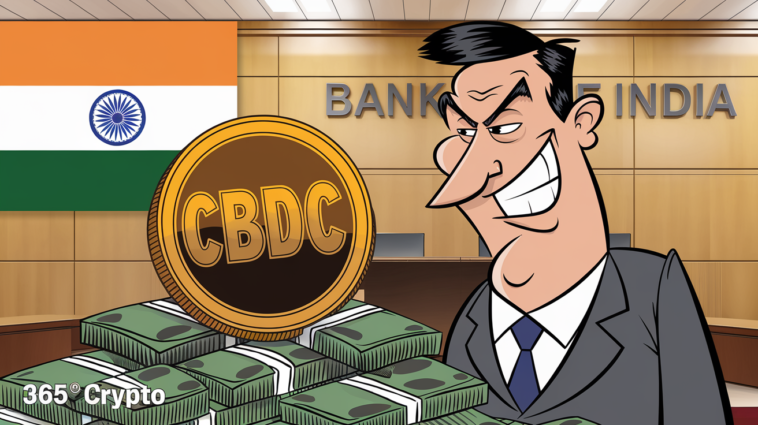India’s Move Toward CBDCs
Even though India is a global leader in crypto adoption, the government is leaning toward banning private cryptocurrencies like Bitcoin and Ethereum. Instead, they see Central Bank Digital Currencies (CBDCs), like the digital rupee, as a safer, more reliable alternative. Governments in charge of flooding the market with money, devaluating people’s savings and creating a monster inflation, still think that the people could trust them with controlling CBDC.
Why the Shift?
According to reports, Indian regulators believe that the advantages private cryptocurrencies offer can be provided by CBDCs without the same level of risk. One official even said, “CBDCs can do everything private cryptos claim to do, but with fewer dangers.”
Stablecoins Under Scrutiny
Stablecoins, which are pegged to assets like gold, are also facing criticism. Regulators argue that these currencies may not be as secure as some people think, even though India has one of the highest rates of crypto use in the world.
Following Global Guidelines
India’s cautious approach follows global recommendations from the International Monetary Fund (IMF) and the Financial Stability Board (FSB). While these organizations call for minimum regulation, they also allow countries to go further and impose stricter rules, including the possibility of banning private cryptocurrencies altogether.
Blockchain for Other Uses
Despite the potential ban, government officials still see value in blockchain technology. They believe it can be used for socially beneficial purposes, like managing government securities, providing loans to underserved communities, and improving how subsidies are distributed.
CBDCs and Financial Inclusion
Shaktikanta Das, the Reserve Bank of India (RBI) Governor, recently highlighted the potential of CBDCs in improving financial inclusion. He pointed out that CBDCs can be programmed to ensure funds go directly to those who need them without any losses along the way.
Progress of the Digital Rupee
India’s digital rupee, first introduced for wholesale use in November 2022, now has a retail pilot program with more than 5 million users and 16 banks involved. The State Bank of India has even used CBDCs to offer targeted loans to farmers in certain regions.
What’s Next?
Although no final decision has been made on banning private cryptocurrencies, the government’s increasing focus on CBDCs like the digital rupee suggests that this may be the direction they are heading.
—–
Central Bank Digital Currency (CBDC): A government-controlled digital currency issued by a country’s central bank.
Stablecoin: A type of digital currency tied to a stable asset, like gold or a fiat currency.




